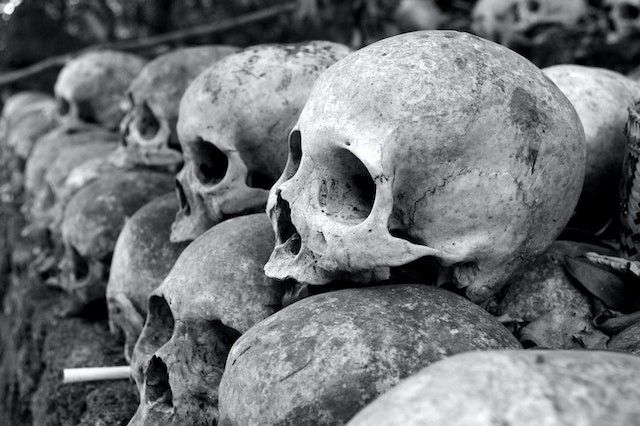
Scientists were puzzled by the sex of a person buried with a mirror and sword from 2000 years ago. They had finally found the answer after doing a DNA analysis of the remains they recovered from the site.
Mysterious Iron Age Warrior
Swords are typically found buried with men and are a sign of warrior rank, whereas ladies were buried with mirrors, which led to misunderstandings about the gender of the grave occupant as both items and a brooch were interred with this person, Newsweek reported.
The burial site was discovered for the first time in 1999 and is located on the British island of Scilly. The remains were believed to be from the Iron Age, roughly from 750 BC to 43 AD, when the Romans landed in Britain.
It has been determined that the skeleton almost probably belongs to a female. The deterioration of the bones-only about 0.3 pounds of bone and teeth remained in the grave-had prevented previous attempts to utilize DNA analysis to determine the sex.
The report's authors explain how they instead employed dental enamel to establish that the subject was a woman.
According to Glendon Parker, a professor of environmental toxicology at the University of California, Davis, tooth enamel is the most challenging and most resilient material in the human body.
It has a protein that connects to either the X or Y chromosome, making it possible to identify sex. He continued that it was helpful because protein survives better than DNA.
Protein traces were extracted for the investigation from minute fragments of the remaining tooth enamel. From it, they could determine that the person was 96 percent female. The woman is estimated to have passed away at about 25 in the first century BC.
Parker exclaimed that having such a good outcome was amazing, considering how deteriorated the bones were. It reportedly made them wonder what might be found if they revisited other seriously damaged graves.
Significance of Recent Findings
The discovery of the sword suggests that the woman may have been a warrior engaged in attacks on hostile towns, which is thought to give additional information on the roles played by women in the Iron Age civilization.
The discoveries present a fascinating chance to reconsider the significant burial. According to a statement by Sarah Stark, a human skeleton biologist at Historic England, it was evidence that women played an essential role in the battle during the Iron Age in Scilly. The presence of a sword and a mirror in a cemetery suggests this woman had a high rank within her society and may have held a commanding position in local warfare, organizing or leading attacks against rival groups. However, researchers can never be entirely sure of the symbolism of artifacts found in graves.
It may indicate that female participation in raids and other violent acts was more widespread in Iron Age civilization than previously believed, and it may also have paved the way for future leaders like Boudicca, the warrior queen.
The mirror discovered in the cemetery may have also been utilized in battle, as a ritual to communicate with the supernatural for successful attacks or as a communication between attack teams.
The finding could perhaps lead to the identification of other women buried in graves that were previously mistaken for those of men due to the presence of war-related artifacts there.
The study was published in The Journal of Archaeological Science Reports.
RELATED ARTICLE : 1,600-year-old Roman Dodecahedron Unearthed in Belgium: What Were Those Ancient Objects Used For?
Check out more news and information on Archaeology in Science Times.












